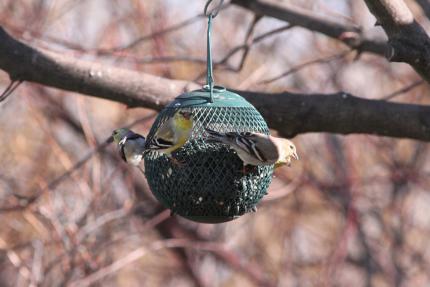
Salmonellosis is a common and usually fatal bird disease caused by the salmonella bacteria. It is transmitted through droppings and saliva when birds flock together in large numbers, such as at bird feeders. The first indication that a bird has it is that it will appear to be tame, is lethargic, fluffs out its feathers, and is easy to approach. At that point, it is usually in late stages of the illness and there is nothing that can be done to help except to report them to WDFW's online reporting tool for sick, injured or dead wildlife. It is important to note that salmonellosis can be asymptomatic. Asymptomatic individuals pose as much a risk in spread of this pathogen as those obviously sick. Reducing unnatural opportunities for backyard birds to flock together, such as at bird feeders, helps to alleviate these risks in transmission amongst individuals.
It is possible, although uncommon, for salmonella bacteria to transfer from birds to humans through direct contact with infected birds, droppings, or through domestic cats that catch sick birds. When handling birds, bird feeders or bird baths, it is best to wear gloves and wash hands thoroughly afterward.
WDFW biologist Chris Anderson discusses how to dispose of dead birds and help slow the spread, as well as answered questions on salmonellosis, in a live event with Seattle Audubon.
How you can help
During a salmonellosis outbreak, the most effective way members of the public can help to stop the spread of the bacteria is by taking down backyard bird feeders to discourage birds from congregating and encourage them to disperse and forage naturally. Birds use natural food sources year-round, even while also using backyard bird feeders, and can survive without feeders.
Those who choose not to discontinue wild bird feeding are encouraged to clean feeders daily by rinsing the feeder with warm soapy water, then dunking in a solution of nine parts water and one part bleach. Finish by rinsing and drying before refilling. Keep the ground below the feeder clean by raking or shoveling up feces and seed casings.